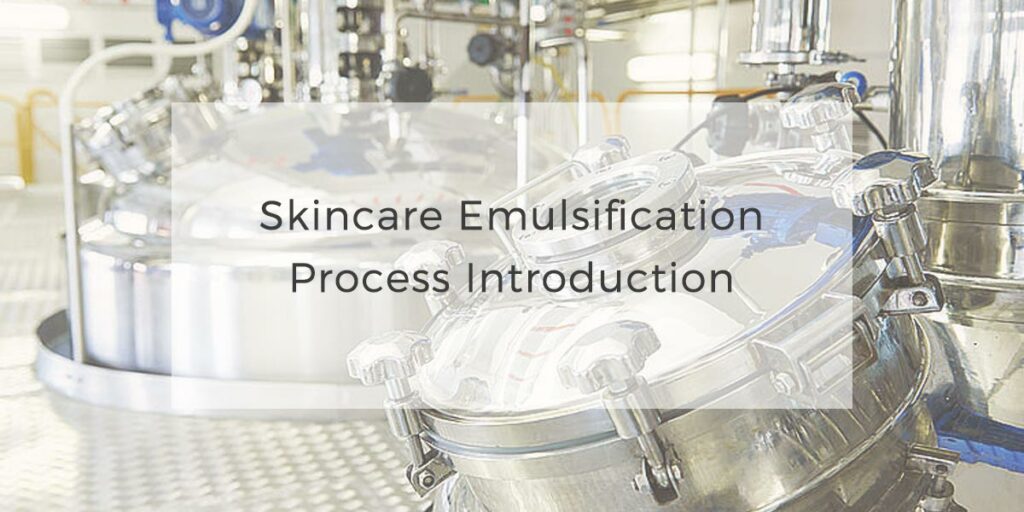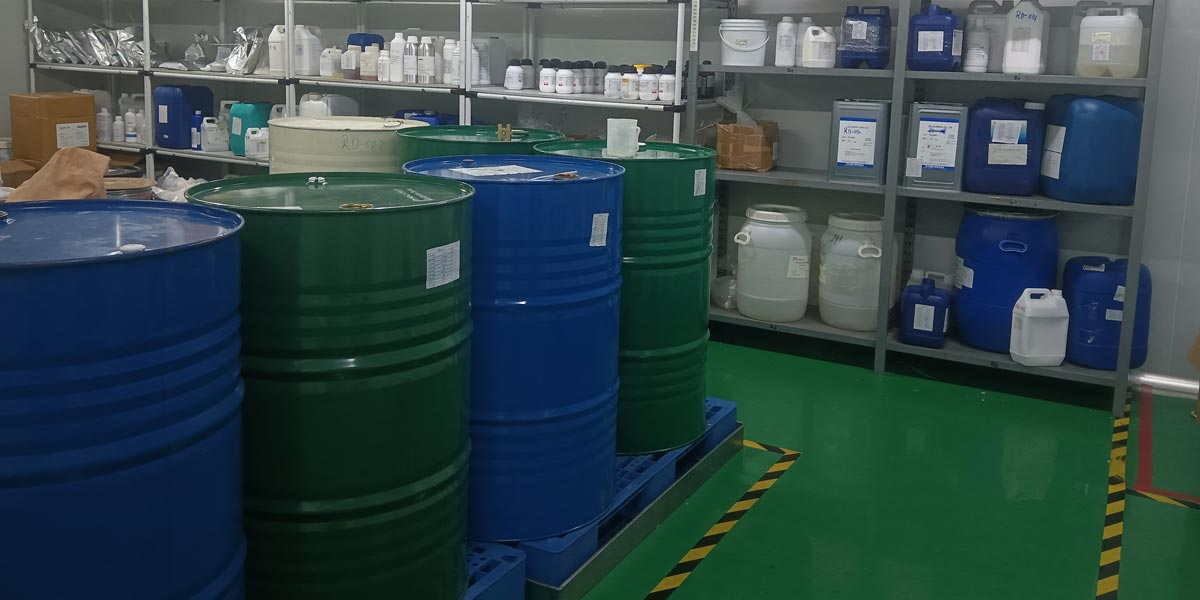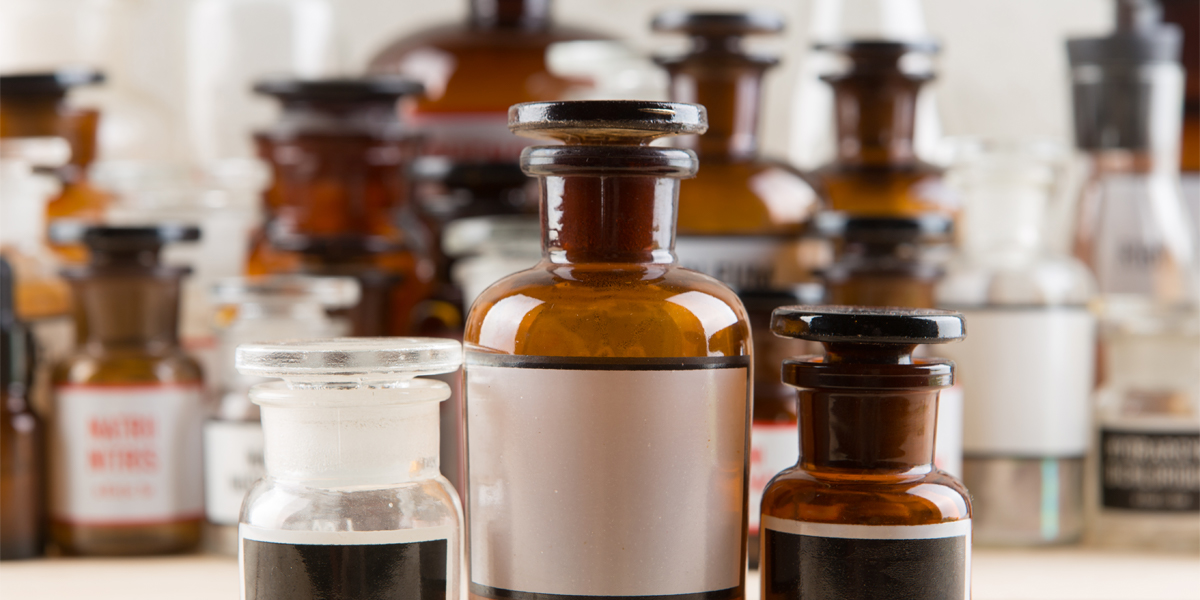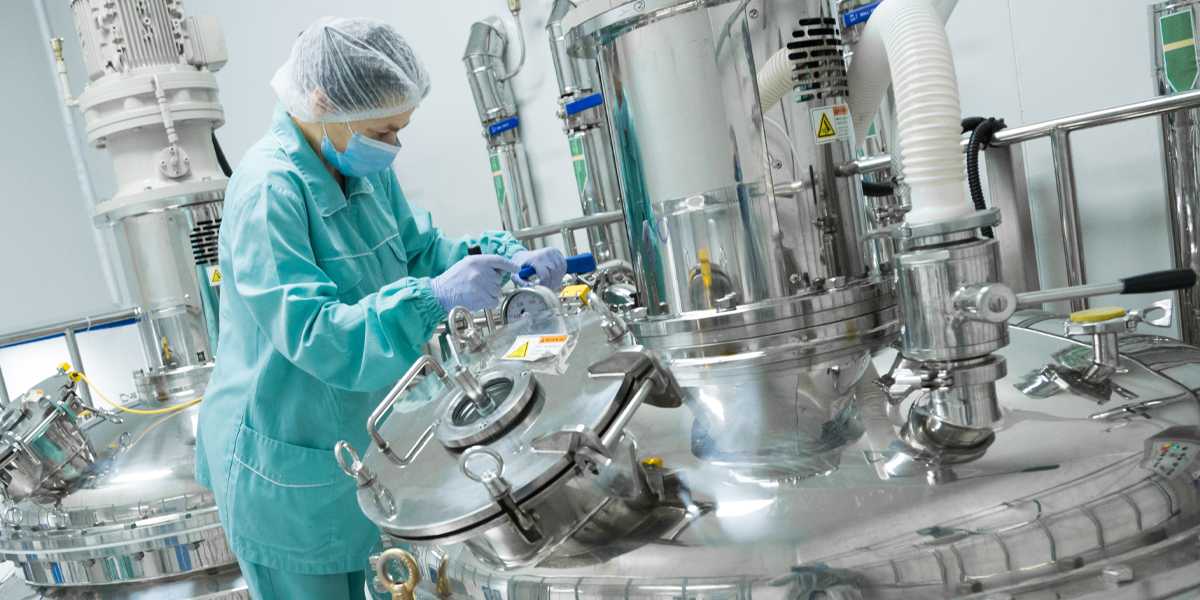Skin care emulsification is an important process in manufacturing skin care products that allows immiscible liquid ingredients (usually water and oil) to be mixed together to create a stable lotion or cream. This is because many skin care products need to contain both water-soluble and oil-soluble ingredients, such as moisturizing ingredients, vitamins, antioxidants and oils. The following is a brief introduction to the emulsification process:
Raw Material Preparation
Water phase ingredients
Water: As the main ingredient in many skin care products, it provides moisturizing and a medium for dissolving water-soluble ingredients.
Distilled water: Used to ensure water purity.
Floral waters (such as rose water, orange blossom water): provide natural aroma and plant extracts.
Hyaluronic Acid: An excellent humectant that attracts and retains moisture.
Oil phase components
Vegetable oils (such as olive oil, almond oil, jojoba oil): Provide emollient and moisturizing properties.
Oil-soluble active ingredients (such as vitamin E, retinol): add additional skin care properties to skin care products.
Lubricant (e.g. silicone, mineral oil): Provides a smooth texture and ease of application.
Emulsifiers: such as phospholipids, glyceryl stearate, polyethylene glycol, used to ensure mixing of the water and oil phases.
Functional ingredients
Antioxidants: such as vitamin C and vitamin E, help protect the skin from free radical damage.
Vitamins: such as vitamin A and vitamin B5, which are beneficial to skin health.
Anti-inflammatory ingredients: such as aloe vera and green tea extract, help reduce skin inflammation.
Preservatives: ensure the stability of the product and extend its shelf life.
Flavors and Colors: Used to provide the aroma and color of a product.
Other ingredients
Moisturizing agents: such as glycerin and sodium hyaluronate, used to improve the moisturizing properties of the product.
PH adjuster: Ensures the pH of the product is within the appropriate range.
Depollution ingredients: such as anti-PM2.5 ingredients, which help reduce the damage to skin caused by environmental pollution.
Anti-acne ingredients: such as salicylic acid and urea, used to treat acne and oily skin.
These ingredients can be combined based on your specific formulation needs and product type. Preparing skin care products requires careful selection of raw materials to ensure they comply with relevant regulations and provide the desired results. In addition, ensuring the quality of raw materials according to formula requirements and quality standards is a key factor in ensuring the success of the final product.
Choose The Right Emulsifier
Choosing the right emulsifier is crucial in preparing lotions, creams and other skin care products as it helps to evenly mix incompatible water and oil phase ingredients together, ensuring product stability and performance. Here are some key considerations for choosing the right emulsifier:
Product Type and Features: First, determine your product type and desired features. Different types of products, such as oil-in-water, water-in-oil, microemulsions, etc., may require different types of emulsifiers.
Ingredient compatibility: It is very important to understand the compatibility between water phase and oil phase components. When choosing emulsifiers, you need to make sure they are compatible with your ingredients to ensure a stable mix.
Hydrophilicity and hydrophobicity: Emulsifiers usually have dual properties, with one end hydrophilic and the other hydrophobic. Based on product needs, select an emulsifier with appropriate hydrophilicity and hydrophobicity. For example, phospholipids are a commonly used natural emulsifier with a hydrophilic phosphate head and a hydrophobic fatty acid tail.
HLB value: HLB (Hydrophilic-Lipophilic Balance) is an index used to measure the hydrophilicity and hydrophobicity of an emulsifier. Choose the appropriate emulsifier based on the HLB values of your water and oil phase ingredients. The choice of HLB value will facilitate uniform distribution of the emulsifier in both phases.
Stability: Make sure the emulsifier chosen provides the required stability to prevent product separation or spoilage. Stability testing is a critical step in evaluating emulsifier performance.
Emulsifier Concentration: Determine the required emulsifier concentration. Different emulsifiers may require different dosages, which are usually specified in the product formula.
Natural or synthetic: Consider whether you want to choose a natural or synthetic emulsifier. Natural emulsifiers are generally preferred by consumers, but synthetic emulsifiers may be more effective in some cases.
Regulatory requirements: Comply with relevant regulations and ensure that the selected emulsifier is legal and meets regulatory standards.
Performance Properties: Consider the performance properties of selected emulsifiers, such as viscosity, gloss, and fineness, to ensure they meet the final textural requirements of the product.
Sustainability: If sustainability is important to your brand, consider choosing an emulsifier that is sustainable and environmentally friendly.
Ultimately, selecting the right emulsifier requires testing and experimentation to ensure its performance and stability in a specific formulation. Usually, professional skin care product manufacturers select appropriate emulsifiers based on product needs and experimental results.
Prepare Water and Oil Phases
Preparing the water and oil phases of skin care products is a critical step in manufacturing various skin care products. The water and oil phases are usually prepared separately during the preparation process and then mixed together to form the final product. Here are the general steps on how to prepare the water and oil phases:
Prepare the aqueous phase:
Choose the right water: Use distilled water or another high-purity water source to ensure the water is free of impurities.
Water Phase Ingredients: Depending on your recipe, add the required water-soluble ingredients to the water. This may include active ingredients, botanical extracts, hyaluronic acid and other water-soluble chemicals.
Heating the water phase: Heat the ingredients in the water phase at the appropriate temperature, usually between 70°C and 80°C, based on your specific recipe requirements. This helps dissolve the ingredients and prepare them for the subsequent emulsification process.
Stirring and Mixing: Use appropriate mixing equipment to ensure that the water phase ingredients are thoroughly mixed and a uniform water phase is formed.
Prepare the oil phase:
Choose vegetable oils and oil-soluble ingredients: Depending on your recipe, choose the appropriate vegetable oil, such as olive oil, almond oil, jojoba oil, etc. Add any desired oil-soluble ingredients such as vitamins, antioxidants, emollients, etc.
Heating the oil phase: The ingredients in the oil phase are heated at an appropriate temperature, usually between 70°C and 80°C. This helps dissolve the ingredients in the oil phase, making it more fluid for mixing.
Stirring and Mixing: Use appropriate mixing equipment to ensure that the oil phase ingredients are thoroughly mixed and a uniform oil phase is formed.
Emulsification:
Slowly pour the water phase into the oil phase or vice versa, while stirring continuously using a stirring device. This will cause the liquid to form into tiny emulsion particles, starting the emulsification process.
Continue stirring and mixing to ensure that the water and oil phase ingredients are thoroughly mixed to form a homogeneous emulsion.
Once emulsification is complete, cool the mixture to stabilize the emulsion.
The key to preparing the water and oil phases is ensuring accurate measurement and mixing of the ingredients to ensure the final product has the desired stability, texture and performance. Depending on your specific product requirements and formulation, you may need to take additional steps, such as adding special functional ingredients or performing quality control testing.
Mix
Blending of skin care products refers to mixing water and oil phase ingredients, as well as other functional ingredients, together to prepare the final skin care product. Mixing is a critical step in preparing skin care products, ensuring the product has the desired stability, texture and performance. Here’s the general skin care product mixing process:
Prepare the water and oil phases: The water and oil phases are usually prepared separately. The water phase includes water and water-soluble components, and the oil phase includes vegetable oil and oil-soluble components. These ingredients are individually heated to the appropriate temperature.
Choose the right emulsifier: Emulsifiers are key to ensuring effective mixing of the water and oil phase ingredients. According to your product type and ingredient compatibility, choose the appropriate type and amount of emulsifier, such as phospholipids, glyceryl stearate, polyethylene glycol, etc.
Emulsification process: slowly inject the water phase into the oil phase or vice versa, while using stirring equipment, such as a high shear mixer, to stir continuously. This will cause the liquid to form into tiny emulsion particles, starting the emulsification process. The speed and duration of stirring are important to ensure uniform dispersion and stability.
Stabilization: Once emulsification is complete, continue stirring and mixing to ensure that the water and oil phase ingredients are evenly dispersed and stabilized together. This helps prevent product separation.
Adjust pH: Depending on product requirements, the pH (pH) of a product may need to be adjusted to ensure it meets expected specifications. This usually requires the addition of acid and alkali agents.
Add other ingredients: According to the needs of the product formula, add other functional ingredients, such as antioxidants, vitamins, spices, pigments, preservatives, moisturizers, etc. Make sure they are evenly dispersed throughout the product.
Quality Control: Conduct stability testing to ensure the product does not separate or deteriorate under different temperatures and times. Conduct other quality control tests such as viscosity, appearance, odor, color, etc. to ensure the product meets quality standards.
Packaging: The final emulsified product can be packed into suitable packaging containers to ensure product stability and hygiene. Packaging should also comply with relevant regulations.
Blending emulsified skin care products requires careful, precise measurement and control to ensure product stability and performance. Depending on the requirements and quality standards of the specific product, different mixing processes and steps can be taken. Manufacturing high-quality skin care products requires expertise and quality control.
Add Additional Ingredients
When preparing skin care products, you can add a variety of additional ingredients to meet specific product needs and enhance a product’s performance, texture, and effectiveness. These additional ingredients can vary depending on the product type and desired effect. Here are some common additional ingredients and their uses:
Antioxidants: Antioxidants such as vitamin C, vitamin E, green tea extract, etc. help protect the skin from free radical damage and slow down the skin aging process.
Vitamins: Vitamins such as vitamin A (vitamin A), vitamin B3 (niacinamide), and vitamin B5 (panthenol) provide a variety of skin health benefits, such as anti-inflammatory, promoting cell renewal, and hydration.
Moisturizers: Moisturizers such as glycerin, hyaluronic acid, allantoin, etc. help maintain skin moisture and improve skin elasticity and smoothness.
Flavors and Colors: Adding natural flavors or colors can provide aroma and color to a product, making it more appealing.
Preservatives: Preservatives are used to extend the shelf life of products and prevent bacterial and mold contamination.
Anti-inflammatory ingredients: Anti-inflammatory ingredients such as aloe vera, cucumber extract, sorbic acid, etc. help reduce skin inflammation and sensitivity.
Sunscreen agent: Adding sunscreen ingredients such as zinc oxide or titanium dioxide can be used to prepare sunscreen skin care products to protect the skin from ultraviolet radiation damage.
Anti-acne ingredients: Some skin care products add anti-acne ingredients such as salicylic acid, sulfur, and niacin for acne and oily skin.
Depollution ingredients: Skin care products can add anti-PM2.5 (fine particulate matter) ingredients to reduce the damage to skin caused by environmental pollution.
Cutin barrier repair agents: Adding cutin barrier repair agents, such as cholesterol and fatty acids, helps improve the skin’s barrier function.
Botanical Extracts: Botanical extracts such as aloe vera, green tea, white tea, lavender, etc. can provide antioxidant, soothing, moisturizing and other skin benefits.
Anti-aging ingredients: Adding anti-aging ingredients such as peptides, hyaluronic acid, and collagen can slow down the aging process of the skin and reduce wrinkles and sagging.
Exfoliants: Exfoliating ingredients such as fruit acids and enzymes can help remove dead skin cells and promote cell renewal.
When adding additional ingredients, make sure they are compatible with the overall formula of the product and comply with relevant regulations. Additionally, determine the appropriate ingredients and dosage based on the product type and target audience. The final product should undergo quality control testing to ensure that its quality and performance meet requirements.
Cooling and Stabilization
The cooling and stabilization steps in skin care product preparation are important steps in ensuring product quality and performance. Once the aqueous and oil phases are successfully emulsified, the product needs to be cooled and stabilized to ensure that it remains stable during storage and use. Here are the general steps for cooling and stabilizing skin care products:
Cool down
Cooling: Once the water and oil phases have been successfully emulsified, the mixture needs to be cooled to room temperature or to the product-specific stabilization temperature. The rate of cooling can be controlled, usually using cooling equipment such as cooling tanks or coolers.
Continue to stir: While cooling, continue to use your mixing device to gently stir the mixture. This helps ensure the mixture cools evenly and avoids stratification or separation during cooling.
Adding heat-sensitive ingredients: If a product contains heat-sensitive ingredients, such as certain vitamins or active ingredients, they are often added after cooling to prevent them from breaking down at high temperatures.
Stabilization
Stability test: After cooling, perform a stability test. These tests include accelerated stability testing to simulate how the product will perform under different conditions of temperature, humidity and time. This helps determine the shelf life and stability of the product.
pH adjustment: If the pH value of the product changes during the cooling process, an acid-base agent can be used to adjust it to ensure that the pH value of the product is within the expected range.
Microbial Stability: Products should also be tested for microbial stability to ensure they are free from contamination by bacteria and mold.
Add other ingredients: During the stabilization stage, you can also add other additional ingredients such as preservatives, fragrances, colors, or other functional ingredients to further improve the performance of your product.
Quality Control: Conduct other quality control tests such as viscosity, appearance, odor, color, etc. to ensure that the product meets quality standards.
Packaging: The final skin care product can be packed into suitable packaging containers to ensure product stability and hygiene. Packaging should comply with relevant regulations.
Cooling and stabilization ensure that the product maintains its performance and stability under varying conditions while extending the product’s shelf life. These steps are crucial to preparing high-quality skin care products.
QC
Quality control of skin care products is an important step to ensure that the products are of high quality and consistency in the market. The following are the key aspects involved in quality control of skin care products:
Quality control of raw materials: Selecting high-quality raw materials is the key to preparing high-quality skin care products. Supplier reliability and raw material quality should be reviewed and monitored. This includes checking the purity, stability and conformity of raw materials to ensure they do not introduce contamination or degrade product quality.
Production process control: When manufacturing skin care products, the production process precise control is required to ensure that every step is performed as specified. This includes monitoring and verification of processes such as mixing, emulsification, cooling, packaging, etc. to ensure the product meets specifications.
Stability testing: Stability testing of skin care products is an important means to evaluate the quality and shelf life of the product. These tests simulate the performance of the product under different conditions of temperature, humidity and time to ensure that the product does not separate, deteriorate or lose quality during storage and use.
Microbial Control: Skin care products are susceptible to microbial contamination and therefore require microbial stability testing. This includes checking products for contamination by bacteria, mold and yeast and taking appropriate steps to ensure the microbiological stability of the product.
Quality Standards: Establish clear quality standards and specifications to ensure products meet requirements. This includes product appearance, smell, color, pH value, viscosity and other requirements.
Quality Control Testing: For every batch of skin care products, quality control testing is performed to ensure it meets quality standards. These tests can include visual inspection, odor assessment, color detection, pH testing, viscosity measurement, etc.
Preservatives and Stabilizers: Use appropriate preservatives and stabilizers to extend the shelf life of your product and ensure product consistency and stability during use.
Packaging Control: Select appropriate packaging materials to protect the product from contamination or environmental factors such as light, oxygen, moisture, etc. Packaging should comply with relevant regulations.
Compliance: Comply with relevant regulations and legal requirements, including product labeling, ingredient statements, safety and other regulatory requirements.
Quality records and traceability: All preparation processes and test results are recorded to ensure product quality traceability. These records are important for the investigation and resolution of quality issues.
Quality control is a key factor in preparing high-quality skin care products to ensure that the products receive a good reputation in the market while protecting the health and safety of consumers. Quality control practices should be part of every stage of manufacturing skin care products, from raw material procurement to product distribution and sales.
Throughout the emulsification process, temperature, stirring speed and the exact ratio of ingredients are very important. Additionally, manufacturers are required to conduct regular quality control testing to ensure product stability and performance. Manufacturing high-quality skin care products requires care and expertise to ensure the final product meets the intended requirements.





